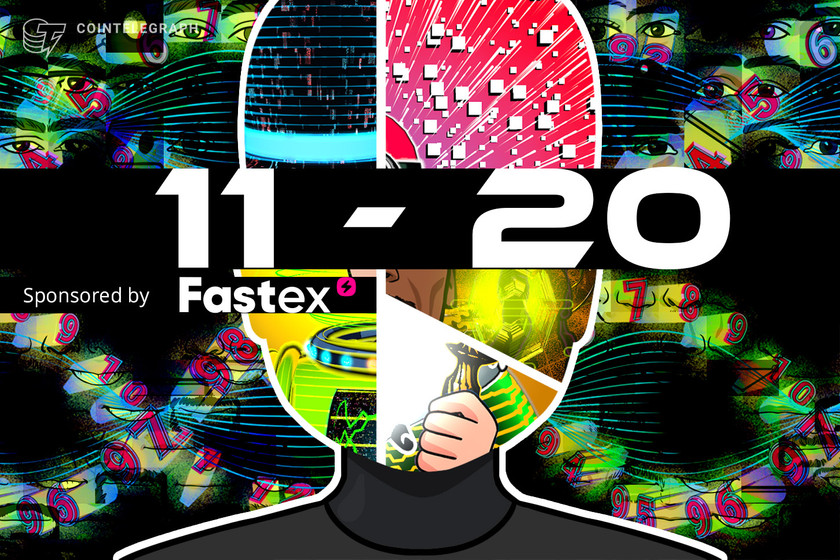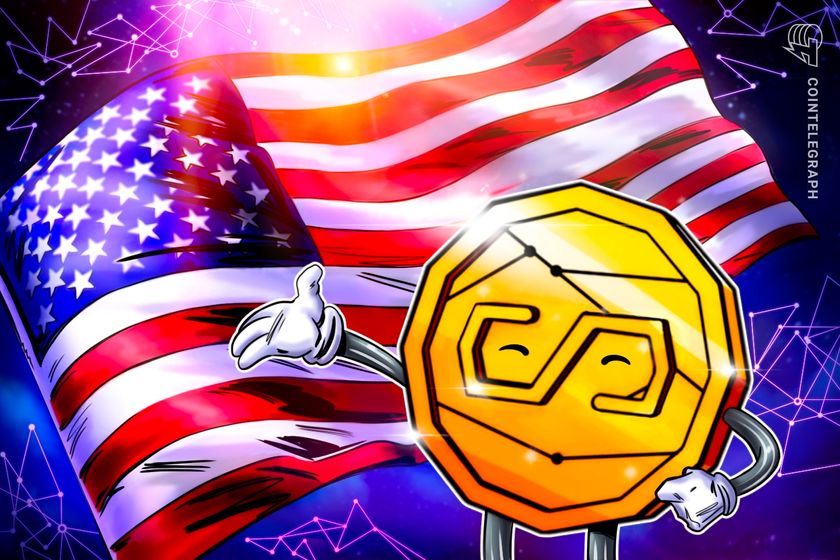Ripple Likely Sold XRP in an Unregistered Securities Offering
In recent months, a number of class-action lawsuits have been filed against Ripple for selling its XRP token in an unregistered securities offering. So far, the United States Securities and Exchange Commission has not published any official statement on this, which has kept everyone guessing.
To help put an end to the uncertainty, Chris Giancarlo, former chairman of the Commodity Futures Trading Commission, published a paper last week arguing that Ripple’s XRP is not a security. Giancarlo is famous for helping establish the CFTC’s stance that Bitcoin (BTC) and Ether (ETH) are not securities. So, it would seem that he is the right person to be making this case.
The only trouble is that Giancarlo is no longer working for the CFTC — he is now in private practice. Not only that, but he is also currently working for a law firm that is on Ripple’s payroll. Given the clear conflict of interest here, before reading the paper I prepared myself to expect some bias. However, I never could have imagined how bad it would be.
I know this kills the suspense, but there’s no way to mince words here: The case made in Giancarlo’s paper for Ripple’s sale of XRP to not be considered a securities offering is nonsensical and absurd, so much so that it boggles my mind that Giancarlo was willing to publicly put his name on it.
Read on in today’s article as I go through Giancarlo’s analysis of whether or not the sale of XRP is a securities offering along with a real analysis of whether or not it is.
Related: Is XRP a Security? We May Never Know
How to know if a token offering is a securities offering
The Howey Test is the SEC’s principal method of determining whether or not an investment is a securities offering. If it is, the issuer must either register the offering with the SEC or ensure that the offering fits within a recognized registration exemption.
As a quick refresher, the Howey Test comprises four prongs that were established in a 1946 Supreme Court case. The ruling was that an investment contract exists where there is:
“A contract, transaction, or scheme whereby a person invests his money [prong one] in a common enterprise [prong two] and is led to expect profits [prong three] solely from the efforts of the promoter or a third party [prong four].”
In order for the sale of XRP to be considered a securities offering, it must meet every one of these prongs. If the offering fails even one of them, then it is not considered a securities offering.
Read on to see the case for how XRP stacks up against the Howey Test.
Investment of money
The first prong of the Howey Test is pretty straightforward: Was there an investment of money in the transaction?
In his analysis, Giancarlo claims that XRP doesn’t meet this prong of the Howey Test because “the common understanding of the term ’investment’ is the transfer of something of value in exchange for a future return rather than a present one.”
At first glance, this sounds reasonable. However, the idea of “investment” as an expectation of future return is handled by the Howey Test’s “expectation of profit” prong. There is no reason to confuse it here with the “investment of money” prong.
Essentially, Giancarlo is presenting a circular argument to avoid admitting the obvious: There is no way to say that there was not an investment of money here. People clearly paid money in exchange for XRP tokens. There’s no other way to see this. I think nearly all courts analyzing this would agree that there was an investment of money.
Remember, just because the XRP offering passes this prong of the Howey Test does not mean that Ripple held an unregistered securities offering. The offering still must pass all of the other prongs of the Howey Test. So, Giancarlo did not have to go to such creative lengths to try to argue against this prong. Of all the prongs that could be met, none are stronger than this one.
Yes — there was without a doubt an investment of money when people purchased XRP. Ripple owned XRP and sold it for U.S. dollars. End of story.
Common enterprise
The next prong of the Howey Test primarily refers to whether or not the returns are shared by those that have invested based on the efforts of a common enterprise. This prong is likely met as well because all holders of XRP share in the gains and losses when the value of their tokens goes up and down based on the managerial efforts of Ripple.
In Giancarlo’s paper, he asserts that there is no common enterprise in this case because “a holder of XRP is not entitled to share in the profits and losses of Ripple.”
This is a terrible argument. There are countless investments that are classified as securities that don’t allow you to share in the profits or losses of the company. Take a bond, for example. You do not share in the profits or losses of the company or government that issued it, yet a bond is undoubtedly a security.
Next, Giancarlo compares Ripple to Bitcoin to help support his argument. He claims that holders of XRP are no different than holders of BTC, and if BTC isn’t a security, then neither is XRP.
Sadly, there is a big, gaping flaw in this argument: Bitcoin’s development is truly decentralized, whereas XRP is dominated by Ripple. So, the holders of XRP are obviously in a common enterprise, as their fate is pooled equally and depends almost entirely on the development efforts of Ripple. The XRP network requires constant work, and much of the token’s use depends on its future development. So, to argue that there’s no common enterprise is plainly denying reality.
Giancarlo argues against this reality by claiming that the XRP ledger would function without Ripple’s involvement. And while it is true that if Ripple were to shut down today, XRP would continue to exist, it’s also true that XRP’s price would plummet and use of the platform would disintegrate.
Yes — XRP holders have invested in a common enterprise. All funds are pooled by Ripple to build out the system, and users all benefit or lose from the corresponding fluctuations in the token’s price.
Expectation of profits
In his paper, Giancarlo argues that there was no expectation of profits because Ripple never officially promised any sort of profit or return to investors and has instead stressed that the main purpose of XRP is for liquidity.
This was a wise move for Ripple, as any marketing of potential earnings, or price increases in XRP, would have automatically gotten its sales of XRP flagged by the SEC. But just because Ripple doesn’t promise future profits in its marketing does not mean that people don’t purchase XRP with the expectation of profit. Anyone who has been following crypto at all over the past few years knows that people buy XRP with the hopes that its price will go up.
XRP was one of the most successful tokens at one point. To argue that there is no expectation of profit is absurd, not to mention futile. Both Kik and Telegram tried to make this argument with the SEC and were shot down.
Then Giancarlo goes on and makes a ridiculous comparison between XRP and Bitcoin, arguing that because Bitcoin is not a security, XRP fails to meet this prong.
But again, this comparison is grossly flawed. Bitcoin is not a security because it fails to meet all the prongs of the Howey Test. So, even though people do buy BTC with an expectation of profits, it is not a security because the other prongs of the Howey Test are not met.
Although Giancarlo does his best, his arguments in this prong are circular and nonsensical.
Yes — users bought XRP with the hopes that its price would go up.
From the efforts of others
The final prong refers to whether or not profits come from a person’s individual efforts or wholly the efforts of the third party they’ve invested in. Though Giancarlo does not take the time to thoroughly explain his case on this prong, he asserts that profits from holding XRP are not derived wholly from the efforts of the Ripple team.
His argument is that “the XRP architecture is fully autonomous and exists entirely independently of Ripple.” To support this, he points to the fact that most of Ripple’s XRP is held in escrow and that the amount that is released is controlled by Ripple’s program. Control over the supply of the token is just one minor way of influencing the token’s price.
Just have a look at the Ripple website and you’ll see the comprehensive team behind Ripple that is pushing forward the token’s development and its adoption with institutional investors.
As mentioned above, it is possible that the XRP ledger could continue to function without the Ripple team. But that would undoubtedly bring down the price of the token dramatically. As such, it is clear that XRP’s growth and the corresponding profits for token holders depend heavily on the efforts of the Ripple team.
Yes — purchasers of XRP are simply passive investors that are counting on the work of the Ripple core team to come up with new products, promote adoption and boost the value of the token overall.
The sale of XRP is clearly a securities offering
In my opinion, XRP clearly meets all of the prongs of the Howey Test and would be considered a security. Through his paper, Giancarlo relies heavily on the assumption that Bitcoin and Ether failed every prong of the Howey Test, which simply isn’t true.
His entire argument was amateurish and intentionally misleading. Very distinct prongs were lumped together and supported with nonsensical legalese to confuse and distract.
The views, thoughts and opinions expressed here are the author’s alone and do not necessarily reflect or represent the views and opinions of Cointelegraph.
Dean Steinbeck is a U.S. corporate lawyer with a focus on data privacy and technology. He is the general counsel for Horizen, a blockchain platform that enables data privacy via a fully decentralized sidechain ecosystem.









